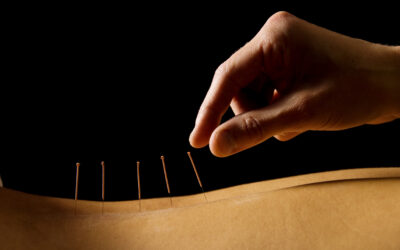In honor of Exercise Day April 18, Carlo Guadagno, DC, DACBSP®, ICSC, FICC , a National University of Health Sciences’ Florida faculty member, shares some of the most pervasive exercise myths that continue to circulate, shedding light on the truth behind them. Whether you’re a seasoned fitness enthusiast or trying to catch up on a News Years’ resolution to live a healthier lifestyle, join us in debunking these misconceptions and paving the way for a more effective and sustainable approach to exercise.
Myth: Exercise takes too much time
Fact: Just 20 minutes of activity is beneficial
The truth is that as little as 20 minutes of activity to get your heart rate up would suffice. You can even divide this time to 10 minutes in the morning and 10 minutes in the evening and it would still be beneficial.
Centers for Disease Control and Prevention’s Physical Activity Guidelines for Americans recommendations state that:
All healthy adults aged 18–65 years should participate in moderate intensity aerobic physical activity for a minimum of 30 minutes five days per week, or vigorous intensity aerobic activity for a minimum of 20 minutes three days per week.
Creating a habit out of exercise is not an easy feat, but as Nike says, “Just do it.”
Seriously, don’t think, just do. If you choose to exercise first thing in the morning, have your outfit spread out with shoes and socks ready to wear. You may even try to just sleep in your workout outfit so you’re ready to go when you wake.
The more you ponder, that nasty little voice inside your head that craves the comfort of your warm bed will appear. The sooner you can step outside and feel the sun, the fresh air and the sounds of chirping birds welcoming the new day, the easier it will be to commence on your lifestyle change of making exercise a habit.
Myth: Weightlifting is just for bodybuilders
Fact: Even senior citizens can benefit from weightlifting
You don’t have to be a bodybuilder to benefit from weightlifting. Resistance training is just as beneficial for senior citizens as it is for a powerlifter. In fact, the World Health Organization recommends strengthening activities at least twice a week. Research shows that moderate exercise combined with strength training was the most effective strategy for weight loss.
Cardio exercise and strength training each have unique health benefits. Combining cardio and strength training in your workout routine is the best way to get in shape and stay your healthiest.
Every adult should perform activities that maintain or increase muscular strength and endurance for a minimum of two days per week. Strength training uses a form of resistance such as weights, exercise bands and even your own body to make your muscles stronger through repetition. Some examples of strength training are:
- Weightlifting
- Yoga
- Calisthenics like push-ups, sit-ups and squats .
There are also plenty of benefits to strength training such as:
- Impro v ement in balance and coordination .
- Assistance in prevent ing injury by improving flexibility and bone health .
- Helps in maintain ing a healthy weight .
Myth: it’s possible to focus on one area to lose weight
Fact: Exercise affects whole body health
Weight loss is system wide and cannot be isolated to a spot on your body like the thighs or midsection. Rather than workout just to eliminate trouble areas, remember that exercising does more than just eliminate excess fat. During moderate cardio workouts, your heart pumps faster and harder to deliver your muscles the extra oxygen they need. This helps:
- Improve heart health and endurance
- Increase energy levels and boost mood
- Regulate blood pressure and blood sugar
Some examples of cardio include running or walking, cycling, High-Intensity Interval Training (HIIT) and swimming. The ideal amount of cardio exercise should be 150 minutes of moderate cardio or 75 minutes of vigorous cardio a week.
Myth: Exercise can make up for a bad diet
Fact: Healthy eating habits are just as important as exercise
Even if you’re exercising, it’s important to stay mindful of what you’re eating. Feeling an increase in appetite after a workout is normal. You just burned a whole lot of calories and now your body is craving more food. One reason is leptin, a hormone associated with satiety, that feeling of fullness. Leptin levels may be impacted and your body may respond with increased hunger.
Spreading out your meals into multiple small meals instead of three large meals can help avoid the starving feeling after exercise. You may also be dehydrated and confuse that thirst for hunger. Staying hydrated during the activity can help avoid post-exercise overeating.
Just like exercise, what you eat is important too. Avoid junk food and include quality high fiber foods instead. Your plate should feature carbohydrates and a moderate amount of lean protein. Limit fats and fiber, which digest more slowly and can upset your stomach while bouncing around during a workout.
Myth: Stretching should be done prior to exercise
Fact: It depends on the individual
Stretching performed as part of a warm-up prior to exercise is thought to reduce passive stiffness and increase range of movement during exercise. In general, it appears that static stretching , like reaching your fingers to your toes, is most beneficial for athletes requiring flexibility for their sports (e.g. gymnastics, dance, etc.).
According to a study published in the International Journal of Sports Physical Therapy (IJSPT) , static stretching is effective at increasing range of motion, however, static stretching as part of a warm-up immediately prior to exercise has been shown detrimental to dynamometer-measured muscle strength and performance in running and jumping. Dynamic stretching like lunges, arm circles and leg swings, may be better suited for athletes requiring running or jumping performance such as basketball players or sprinters.
The benefits of stretching seem to be individual to the population studied. The IJSPT articles say adults over 65 years old should incorporate static stretching into an exercise regimen. The study also says that a variety of orthopedic patients can benefit from both static and pre-contraction stretching although patients with joint contractures do not appear to benefit from stretching.
Myth: It’s better to be over-hydrated than risk being under-hydrated
Fact: You’re more likely to risk over-hydration
Almost no one dies of dehydration in a marathon, but hyponatremia cases have been reported. Hyponatremia is caused when the athlete over hydrates. This decreases the sodium in the blood which causes cells in the body to swell. Early signs are weakness, headaches, nausea, dizziness , and lightheadedness. Unfortunately, these signs are eerily similar to dehydration , which may signal a race volunteer to provide more water which of course is the wrong treatment and can place the athlete in further distress.
I recommend drinking to thirst if the activity is less than 90 minutes, in cooler temperatures and not vigorous. If the activity is greater than 90 min ute s , in hotter temperatures, has more vigorous intensity, then planned drinking is wise. Also, where a high level of performance is required, research shows that a sports drink with 4% to 8% carbohydrates is superior to water alone.
Guidelines from major sport science groups like the American College of Sports Medicine , National Strength and Conditioning Association and National Athletic Trainers’ Association state:
- If your urine is dark and there is not much of it, you are dehydrated. You should increase your fluid intake. Drink fluids until your urine is pale yellow or clear and plentiful.
- In general, drink as much fluid as you can comfortably tolerate both before, during, and after exercise. Drinking small amounts of fluid frequently usually works better than drinking a large amount once or twice.
For exercise general guidelines are:
- Drink 2 to 3 cups about 2 hours before exercise.
- Drink 1 cup 5 to 10 minutes before exercise
- Drink 1 cup every 15 to 20 minutes during exercise, especially in warm weather.
- Try the Tom Brady or “TB12 method” which says you should drink at least half of your body weight in ounces of water per day.
In recent years, weight loss clinics and the addition of weight loss to physicians’ practices has boomed. It is not an easy feat to attempt to change the lifestyles, habits and culture of our weight loss seekers that enter the health care offices. It entails a more holistic approach which includes counseling/guidance, nutrition and of course exercise.
It’s important to celebrate Exercise Day not just on April 18, but every day. By prioritizing movement, nourishing your body with wholesome foods, and nurturing your mental and emotional health, you can cultivate a positive relationship with exercise that enhances your overall well-being.






0 Comments